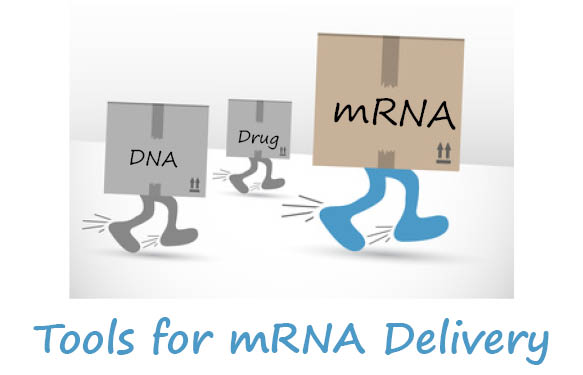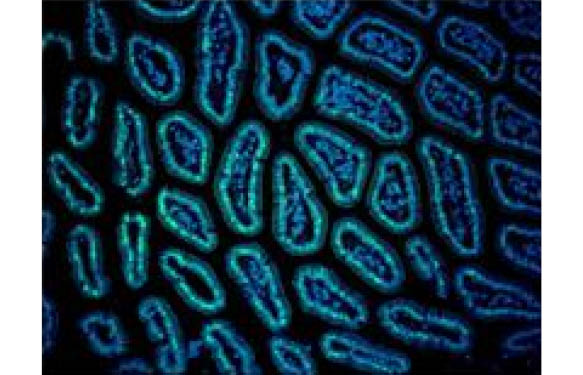Accurate monitoring of genome transcription activities is of crucial interest for deciphering gene expression and for a better understanding of RNA biology. Over the past years, various experimental methods for RNA Pol II mapping density across the whole genome have been designed. Here, I’d like to offer a brief introduction to the human Native Elongating Transcript-Sequencing (NET-Seq) method.
Some of the genome-wide transcription profiling assays are based on RNA Polymerase II-pull down followed by array or sequencing analysis (ChIP-Seq) of the associated DNA. Alternatively, methods starting from the purification of nascent RNA molecules and conjugated with in vitro RNA labeling and NGS have been also designed (ex. GRO-Seq or PRO-Seq).
In 2011, Churchman et al. introduced a deep sequencing method of 3′-end of nascent transcripts associated with Pol II (Native Elongating Transcript-Sequencing or NET-Seq). NET-Seq relies on the purification of elongating Pol II associated with nascent RNA molecules by cell fractionation followed by high-throughput sequencing. Thus, NET-Seq does not require immuno-precipitation or RNA labeling steps known to bring experimental biases. (1) Recently, Dr Mayer and Dr Churchman (Harvard Medical School, Boston, USA) have published a complete NET-Seq workflow in Nature Protocols from human cells (ex. HeLa S3, HEK293T, K562 and MOLT-4 cells) to profile all Pol II genome transcription in human live cells at nucleotide resolution. (2)
Starting from mammalian cells, the authors provide a step-by-step experimental procedure from purification of RNA Polymerase and nascent RNA preparation to DNA Linker ligation, RNA fragmentation, cDNA synthesis and circularization by the ATP-dependent CircLigase™ ssDNA Ligase, depletion of highly abundant mature RNA to PCR amplification and characterization of the NET-seq library.
Learn more about acccurate Pol II genome mapping by NET-Seq
- L. Stirling Churchman & J.S. Weissman “Nascent transcript sequencing visualizes transcription at nucleotide resolution” (2011) Nature; 469 ; 368-375. DOI : 10.1038/nature09652
- A. Mayer & L. Stirling Churchman “Genome-wide profiling of RNA polymerase transcription at nucleotide resolution in human cells with native elongating transcript sequencing (2016) Nature Protocols. DOI : 10.1038/nprot.2016.047
You might also like to visit Dr Churchman’s web site: http://churchman.med.harvard.edu/
 Interested in learning more about tools like this?
Interested in learning more about tools like this?Subscribe to thematic newsletters on your favourite research topics.
About CircLigase™ ssDNA Ligases
CircLigase™ ssDNA Ligase is an ATP-dependent ligase catalyzing intramolecular ligation, also known known as circularization, of ssDNA templates with a 5′-phosphate and a 3′-hydroxyl group in the absence of a complementary sequence. The enzyme is therefore useful for making circular ssDNA molecules from linear ssDNA for rolling-circle replication, rolling-circle transcription, ligation step in RNA-Seq library preparation in presence of ATP containing reaction buffer. (3)
Recently released, the CircLigase™ II ssDNA Ligase is nearly 100% adenylated, therefore it is not necessary to add ATP to the reaction buffer. CircLigase™ II ssDNA Ligase has proven to be useful in individual-nucleotide resolution UV CrossLinking and ImmunoPrecipitation (iCLIP) has been described in a previous post and in a recent paper to study RNA-protein interactions. (4)
3. Jackson T.J. et al. “Evaluating bias-reducing protocols for RNA sequencing library preparation” (2014) BMC Genomics; 15; 569. DOI: 10.1186/1471-2164-15-569
4. Palanichamy J.K. et al. “RNA-binding protein IGF2BP3 targeting of oncogenic transcripts promotes hematopoietic progenitor proliferation” (2016) J Clin Invest. 126;4 : 1495-1511. DOI : 10.1172/JCI80046.



